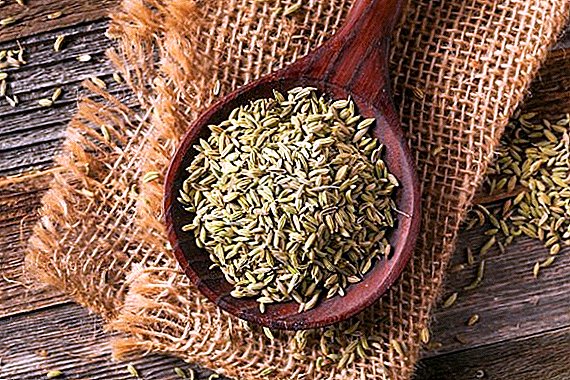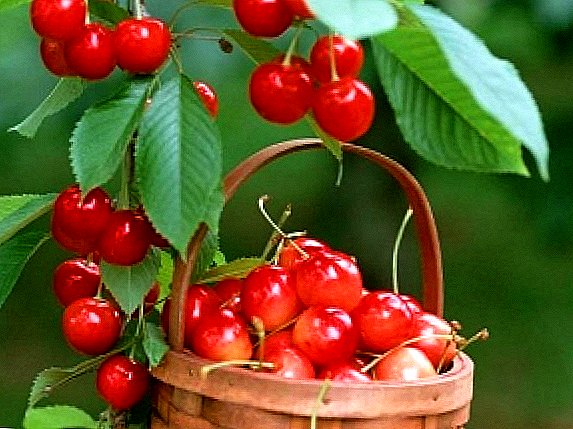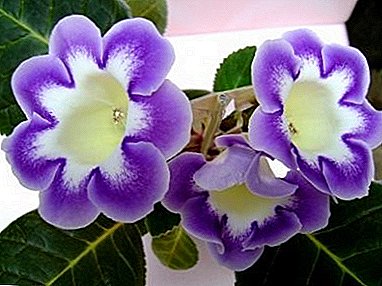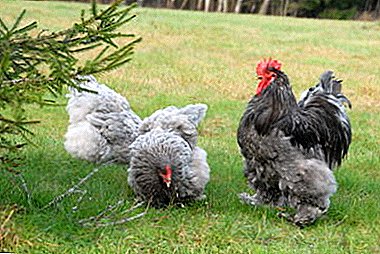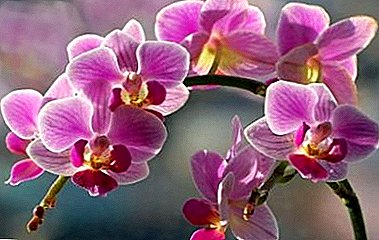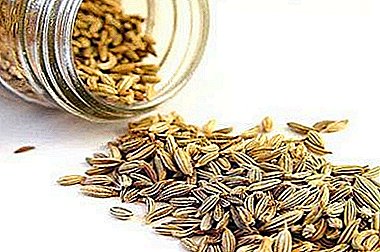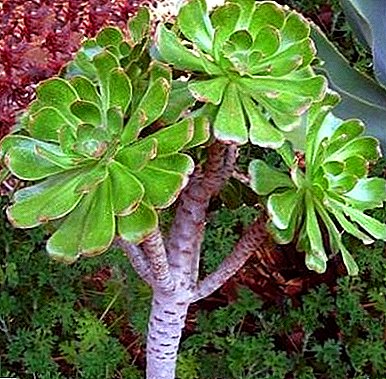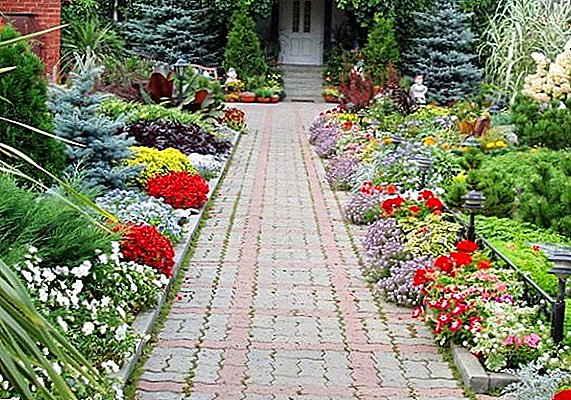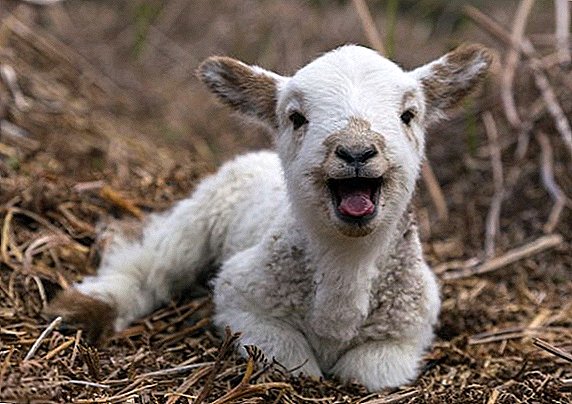 Raspberries is not only a very tasty berry, but also a rather expensive product that is popular with adults and children. Many gardeners who grow this plant, are thinking about choosing the most appropriate variety that will be excellent fruit and not require transcendental conditions. Today we will discuss the Raspberry Modest, learn the description of the variety, the yield from one bush, as well as other important information that will help you choose the right plant and grow it properly.
Raspberries is not only a very tasty berry, but also a rather expensive product that is popular with adults and children. Many gardeners who grow this plant, are thinking about choosing the most appropriate variety that will be excellent fruit and not require transcendental conditions. Today we will discuss the Raspberry Modest, learn the description of the variety, the yield from one bush, as well as other important information that will help you choose the right plant and grow it properly.
History of creation
In the early 80s, selective work was carried out at the Kokinsky crossing point. As a result, the raspberry variety we discussed was obtained on the basis of Rubin Bulgarian and Ottawa varieties. The author of the variety is the breeder Kazakov.  Grade testing began in the year 82. As a result, the Shy Modest variety was obtained, which was ideally suited for planting throughout Russia, where the climate allowed planting crops. He also received good taste scores.
Grade testing began in the year 82. As a result, the Shy Modest variety was obtained, which was ideally suited for planting throughout Russia, where the climate allowed planting crops. He also received good taste scores.
Did you know? For decorative purposes, fragrant raspberry is used, on the basis of which hedges are formed. The plant is great for the rapid formation of a green fence.
Description and distinctive features of the variety
Having finished with a small prehistory of the raspberry variety Modest, we turn to the characterization of our variety, which has become a real salvation for many farms.
Bushes
Let's start with the aboveground part of the plant.
The plant is a slightly sprawling shrub that grows up to 200 cm in height. It has an average ability to shoot. It is worth noting that the modest shrubs branch well, while shoots grow straight.  Spikes can be found only on the radical part, but even there they are not a threat, as they are smoothed.
Spikes can be found only on the radical part, but even there they are not a threat, as they are smoothed.
Berries
Berries have an average size. The shape is spherical, and larger fruits may be slightly stretched into a cone. The mass of fruits within 3 g. Malina has an average density, is separated from the leg with effort.
Check out also such varieties of raspberry as "Polka", "Atlant", "Cumberland", "Caramel", "Yellow Giant", "Gusar", "Heritage", "Barnaulskaya", "Ispolin", "Pride of Russia", "Canadian", "Kirzhach", "Hercules".Painted in the usual dark crimson color, have a large number of drupes (seeds).
It is worth noting that the fruits are formed not randomly, but by individual brushes, so the collection of finished products takes less time.
It is necessary to answer the question of whether the raspberry The Modest is remontant or not. Unfortunately, this variety is not repairable, unlike the Hercules or Indian Summer varieties. 
Yield
With a hectare of planting, which are grown in good conditions, get the right amount of moisture, heat, mineral water and humus, you can collect about 100 kg of berries, which is an excellent indicator.
Disease resistance
The unequivocal advantages include resistance to the main diseases of the raspberry: anthracnose, various fungal diseases.
The bark of shoots is resistant to decay and pathogenic organisms.
Important! The berry is sensitive to gray rot, and the plant itself is often affected by spider mites.
Frost resistance
The variety has a good frost resistance, which is why it can be planted in Western Siberia, where the temperature in winter can drop to -30 ° C. However, it should be understood that if the winter is not very snowy, then the frost paired with a strong wind can severely damage the shoots. 
How to choose seedlings when buying: tips
Before buying a sapling, you need to know the criteria for choosing a young plant, as well as the basic requirements for a sapling.
If you are going to purchase raspberries in the market, then you need to choose a sapling more carefully, since you can buy not just a sore tree, but also a completely different variety.
Learn also how to choose seedlings of a columnar plum, apple, grape, skumpiii, chokeberry, peach, sweet cherry, forsythia.You may have come across the fact that, for example, a gardener buys a pineapple peach, and eventually gets a small fruit variety that has a disgusting taste and does not grow well.
So, if you buy a sapling with bare roots (without an earthen coma), then measure its length and check for roots on the touch. The length of the seedling should not exceed 40 cm, the roots should be wet, have a familiar color.  Also on the sapling should not be a single leaf, otherwise a similar option is better to exclude immediately.
Also on the sapling should not be a single leaf, otherwise a similar option is better to exclude immediately.
As for young bushes with closed roots, they can be of arbitrary height and with leaf plates.
Next, we consider the place of cuts, shoots, buds and bark. The plant should be free from any stains, mechanical damage, any insects or bugs. If there is anything from this list, then it is better to choose another raspberry bush.
Important! No part of the plant should be dry.If you have the opportunity to consider the roots, then measure their length. Minimum allowed 15 cm length of rhizome, not less. The diameter of the base of the shoot should be about 8-10 mm.
 It may seem to you that all these norms are exaggerated, but it should be understood that if you buy several dozens of plants for the garden, and then some of them die, and the other part will give a third of the specified harvest, then you just throw money into the wind and spend in an empty colossal amount of time.
It may seem to you that all these norms are exaggerated, but it should be understood that if you buy several dozens of plants for the garden, and then some of them die, and the other part will give a third of the specified harvest, then you just throw money into the wind and spend in an empty colossal amount of time.Be careful when choosing a "candidate". For large purchases, it is better to contact friends or purchase seedlings in the nursery. They will provide a guarantee of quality, and in case of problems, you will be able to return the money.
Choosing the right place
After purchasing the planting material, we will need to plant it in the right place at the right place in the shortest possible time, so we will further indicate the main requirements of the variety.
Lighting
Raspberries are planted on an open sunny place, which is well protected from the winds.  Based on the above, it is best to allocate a place near a solid high fence, a wall of a house, or some other building. It is worthwhile to calculate whether the building or fence will not shade the plant for most of the daylight hours.
Based on the above, it is best to allocate a place near a solid high fence, a wall of a house, or some other building. It is worthwhile to calculate whether the building or fence will not shade the plant for most of the daylight hours.
Important! Lighting affects both the development of the green part and the yield.
The soil
Since raspberries grow in one place for about 10 years, the soil during this time should give the raspberry all the necessary substances and trace elements. It is worth considering that the shrub does not tolerate overwetting of soil or moisture stagnation, although it is protected from many fungal diseases.
Important! In the acidic soil before planting you need to make lime.It turns out that we need a flat area that will not be in the lowland. The soil should have good drainage properties and be as rich in humus and minerals as possible.

Preparatory work before landing
Immediately it should be said that the landing is carried out in the autumn or spring, so it is worth it in the summer or at the end of winter to prepare the site.
As mentioned above, the soil should have a neutral reaction with the assumption of small deviations in each direction. All weeds, debris, hazardous substances should be removed from the site.
To produce soil, you need to make up to 0.5 kg of lime per meter, depending on the degree of oxidation.
Next, you need to dig a plot on the bayonet of the shovel and make a "mineral water" and humus. On the square you need to close up about 20 kg of humus and make 40 g of potassium chloride and superphosphate.  At your request, you can not carry out a continuous digging, and make a trench version.
At your request, you can not carry out a continuous digging, and make a trench version.
In this case, organic matter and mineral fertilizers are embedded exclusively in trenches so that the roots do not directly contact with the fertilizers during planting, in order to avoid burns.
Organic fertilizers include pigeon dung, bone meal, fish meal, milk whey, potato peelings, egg shells, banana skins, and mineral fertilizers - ammonium sulfate, Ammophos, Kemira, Crystalon.At this site preparation is completed, you can carry out planting.
Did you know? In medicine, the dried fruits of raspberry are used as a diaphoretic.
Planting seedlings on the site
Above, we talked about planting under digging or trenching. Next, we will discuss landing patterns in more detail, and also indicate the best time. 
Timing
If raspberries are planted in the spring, then you need to choose the moment when the movement of the juices in the trees has not started to minimize trauma to the plant.
If the planting is carried out in the fall, then it is advisable to do it after the trees lose their leaves, otherwise the raspberry may grow when it is necessary to prepare for winter.
Scheme
When planting a Prudent in rows, it should be borne in mind that the distance between neighboring plants should be at least 40 cm. It is better to retreat a little more, in order not to waste time on thinning.
It should be understood that the area of suction depends on how quickly impoverished the soil and how much each individual bush can get nutrients. The distance between the rows should be about 2 m.  This indent is done in order to increase the area for each plant, as well as give you the opportunity to calmly walk up to each bush and carry out trimming or garter work, if required.
This indent is done in order to increase the area for each plant, as well as give you the opportunity to calmly walk up to each bush and carry out trimming or garter work, if required.
If you plant bushes not in a trench way, you can use another scheme - 2x1 m. In this case, the first value is responsible for the distance between arbitrary rows, and the second between the bushes.
Competent care - the key to a good harvest
After planting the bushes, you need to think about the right care, which should be based not only on the requirements of the variety, but also on weather conditions.
Watering and mulching
You already know that the Shy can tolerate a slight drought, but you should not allow this, since the yield directly depends on the amount of moisture. It is not necessary to flood the plant, but the soil should always be wet.  As for mulching, it plays an important role not only as protection against temperature extremes, drying out or fouling by weeds. Think about how difficult it is to make annually for large planting raspberry humus.
As for mulching, it plays an important role not only as protection against temperature extremes, drying out or fouling by weeds. Think about how difficult it is to make annually for large planting raspberry humus.
And in case you promulgated the beds with this same humus, then the soil will remain moist, and the necessary nutrients will be supplied in small doses.
It is for this reason that we recommend laying mulch immediately after planting raspberries. The optimum thickness is 10-15 cm.
Important! You can mulch the soil with peat.
Fertilization
Our landings require nitrogen and potassium annually. For this, in the spring urea or ammonium nitrate is introduced into each square within reasonable limits.  Also during the growing season make potassium. It is necessary to use potassium sulfate, since the chloride variant can greatly harm the culture.
Also during the growing season make potassium. It is necessary to use potassium sulfate, since the chloride variant can greatly harm the culture.
You can add mulch both in spring and in autumn. It is important to ensure that it does not break and that pathogens do not breed in it, so vary the thickness of the mulch depending on the humidity.
Preventive treatment
Prophylactic treatment should be carried out 2 times a year: before flowering and after harvesting. The first treatment is carried out using the following means: Spark or Confidor.
You can also use analogues of these funds, but you need to carefully compare the spectrum of action.
Important! If a plant gall midge appears on the plant, then the affected areas should be removed and burned outside the site.In the fall, raspberries need to be treated with Karbofos or its analogs.

Support
High raspberry bushes need support, because during fruit ripening shoots can bend and even break off. The central stem does not always withstand the weight of green mass and fruits, because of which you can lose a few plants.
Reliance helps to cope with thickened landings, which leads to shading of neighboring bushes. Uncoupled plants are difficult to inspect and cut, so columns are placed along the rows and wire with a diameter that is able to withstand the weight of the shoots is stretched.
You can use your version of the support, but it is worth remembering that it should be durable and not obscure the fit.
Pruning
In spring or autumn, fruiting shoots need to be shortened to 20-30 cm in order to control the density and maintain yield. Shortening the branches also carried out immediately after planting.  In the spring, sanitary pruning should be carried out, during which dry, diseased and damaged branches are removed. Removed frozen parts to healthy kidneys.
In the spring, sanitary pruning should be carried out, during which dry, diseased and damaged branches are removed. Removed frozen parts to healthy kidneys.
It is worth noting that the top of the bush, too, should be shortened to increase the number of berries and their size.
Wintering
Above, we talked about the fact that raspberries the Modest withstand severe cold, but this information is true only if the bushes are covered with snow. If the winter has little snow and the tops of the shoots are not covered in any way, then they will freeze.
To protect the bushes from frost, they need to be tied in a bunch and bend to the ground. All this is done at the end of autumn, when weather forecasters start talking about night frosts.  You can also cover the pinned bushes with spruce leaves or purchased covering material, if you are sure that the snow will not cover the prepared bushes.
You can also cover the pinned bushes with spruce leaves or purchased covering material, if you are sure that the snow will not cover the prepared bushes.
Now you know which raspberry variety is great for cold winters and is not afraid of a weak drought or fungal diseases. If you plan to launch products for sale, then you need to provide plants with nutrients and microelements to the maximum in order to get high yields.
Observe these requirements and check the plants regularly for pests or diseases.


